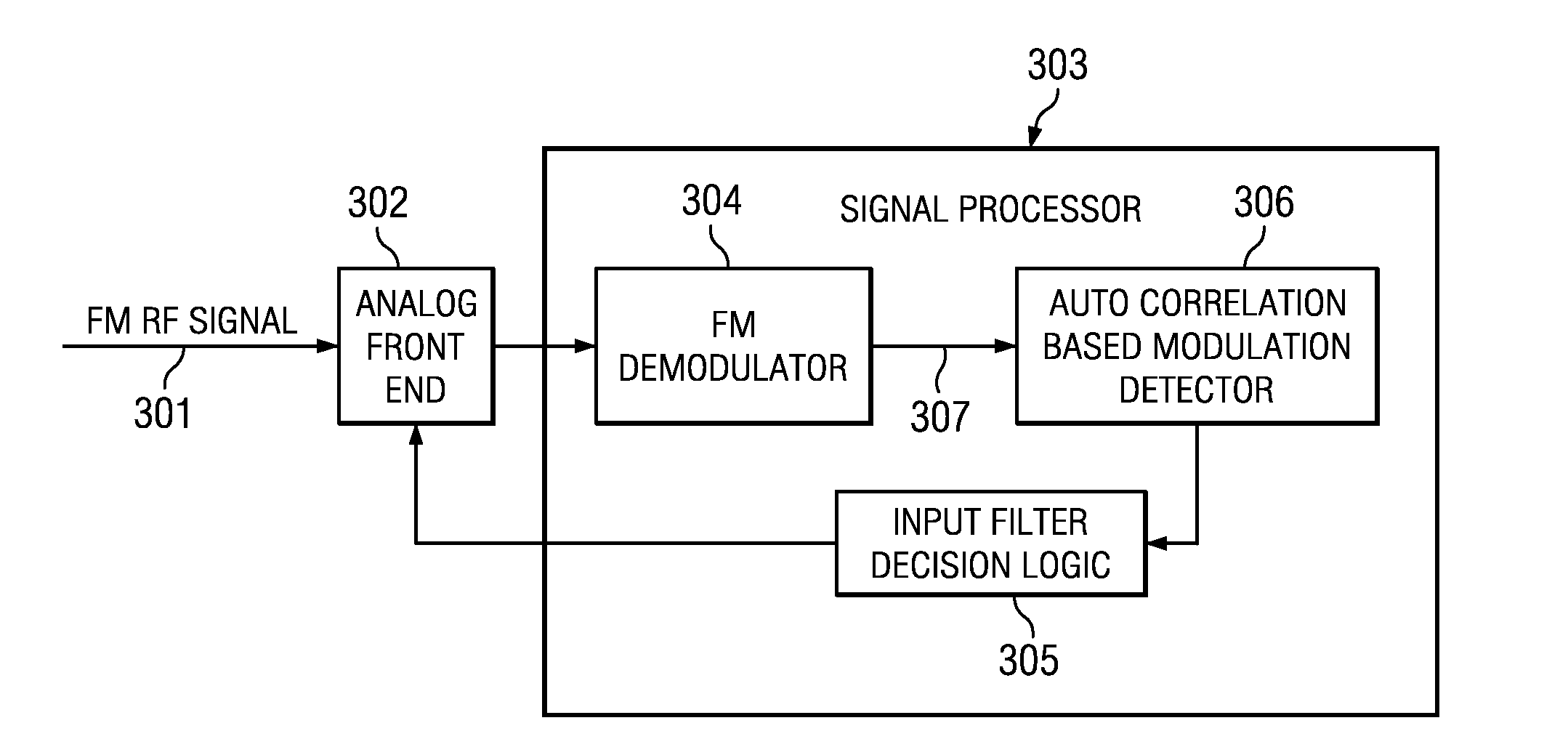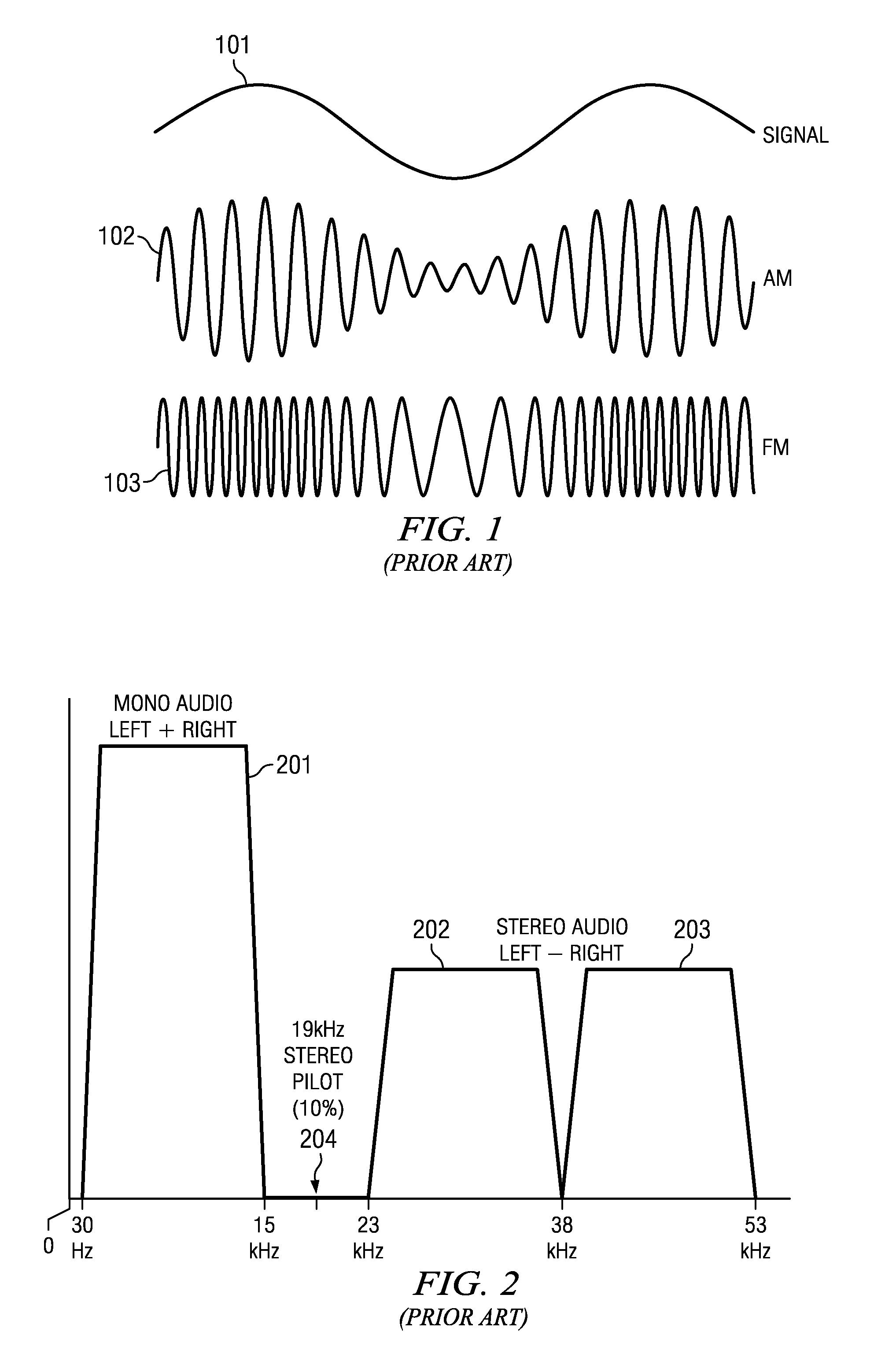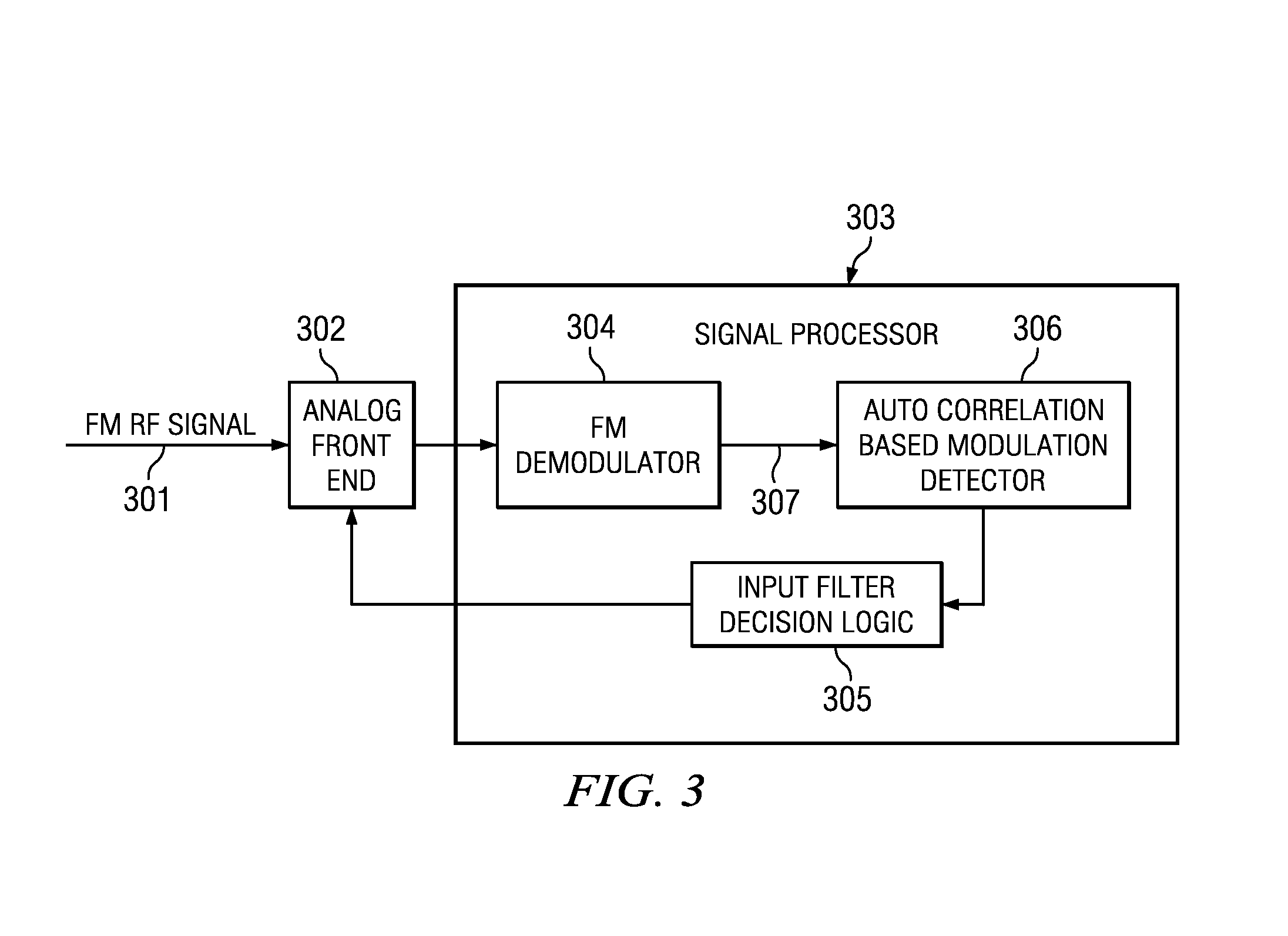Robust FM Modulation Detector Using Signal Autocorrelation
a detector and signal technology, applied in the field of frequency modulated radio communication, can solve the problems of difficult estimation of modulation, degrade performance, and contribute to additional noise, and achieve the effect of minimizing the effect of noise, and reducing the noise of the signal
- Summary
- Abstract
- Description
- Claims
- Application Information
AI Technical Summary
Benefits of technology
Problems solved by technology
Method used
Image
Examples
Embodiment Construction
[0018]In the implementation shown in FIG. 3 the input to the system is the FM Radio Frequency (RF) signal 301, which feeds an Analog Front End (AFE) 302, that extracts the desired FM signal by filtering the appropriate portion of the frequency spectrum. The AFE also down converts the RF signal to a baseband signal, and performs Analog-to-Digital conversion. Thus, In phase—Quadrature phase (IQ) baseband samples are generated for the signal processor 303. The signal processor consists of an FM demodulator 304 implemented in software, where the output of the demodulator is the recovered audio signal. This is the input to the autocorrelation based modulation detector 306. The output of this block is the estimated modulation, which is used by the input filter decision logic 305 to convey the desired input filter to the AFE.
[0019]In the embodiment described the recovered audio signal 307 is the input to the autocorrelation calculation performed in block 306, as shown in the following equa...
PUM
 Login to View More
Login to View More Abstract
Description
Claims
Application Information
 Login to View More
Login to View More - R&D
- Intellectual Property
- Life Sciences
- Materials
- Tech Scout
- Unparalleled Data Quality
- Higher Quality Content
- 60% Fewer Hallucinations
Browse by: Latest US Patents, China's latest patents, Technical Efficacy Thesaurus, Application Domain, Technology Topic, Popular Technical Reports.
© 2025 PatSnap. All rights reserved.Legal|Privacy policy|Modern Slavery Act Transparency Statement|Sitemap|About US| Contact US: help@patsnap.com



